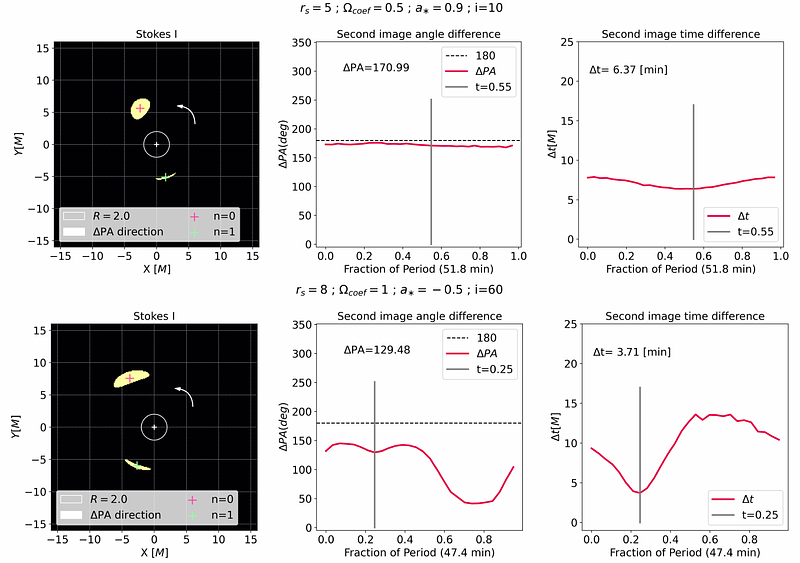Lensing of hot spots in Kerr spacetime: An empirical relation for black hole spin estimation

Lensing of hot spots in Kerr spacetime: An empirical relation for black hole spin estimation
A. I. Yfantis, D. C. M. Palumbo, M. Mościbrodzka
AbstractSagittarius A* (Sgr A*) exhibits frequent flaring activity across the electromagnetic spectrum, often associated with a localized region of strong emission, known as a hot spot. We aim to establish an empirical relationship linking key parameters of this phenomenon -- emission radius, inclination, and black hole spin -- to the observed angle difference between the primary and secondary image ($\Delta PA$) that an interferometric array could resolve. Using the numerical radiative transfer code IPOLE, we generated a library of more than 900 models with varying system parameters and computed the position angle difference on the sky between the primary and secondary images of the hot spot. We find that the average $\Delta PA$ over a full period is insensitive to inclination. This result significantly simplifies potential spin measurements which might otherwise have large dependencies on inclination. Additionally, we derive a relation connecting spin to $\Delta PA$, given the period and emission radius of the hot spot, with an accuracy of less than $5^\circ$ in most cases. Finally, we present a mock observation to showcase the potential of this relation for spin inference. Our results provide a novel approach for black hole spin measurements using high-resolution observations, such as future movies of Sgr A* obtained with the Event Horizon Telescope, next-generation Event Horizon Telescope, and Black Hole Explorer.